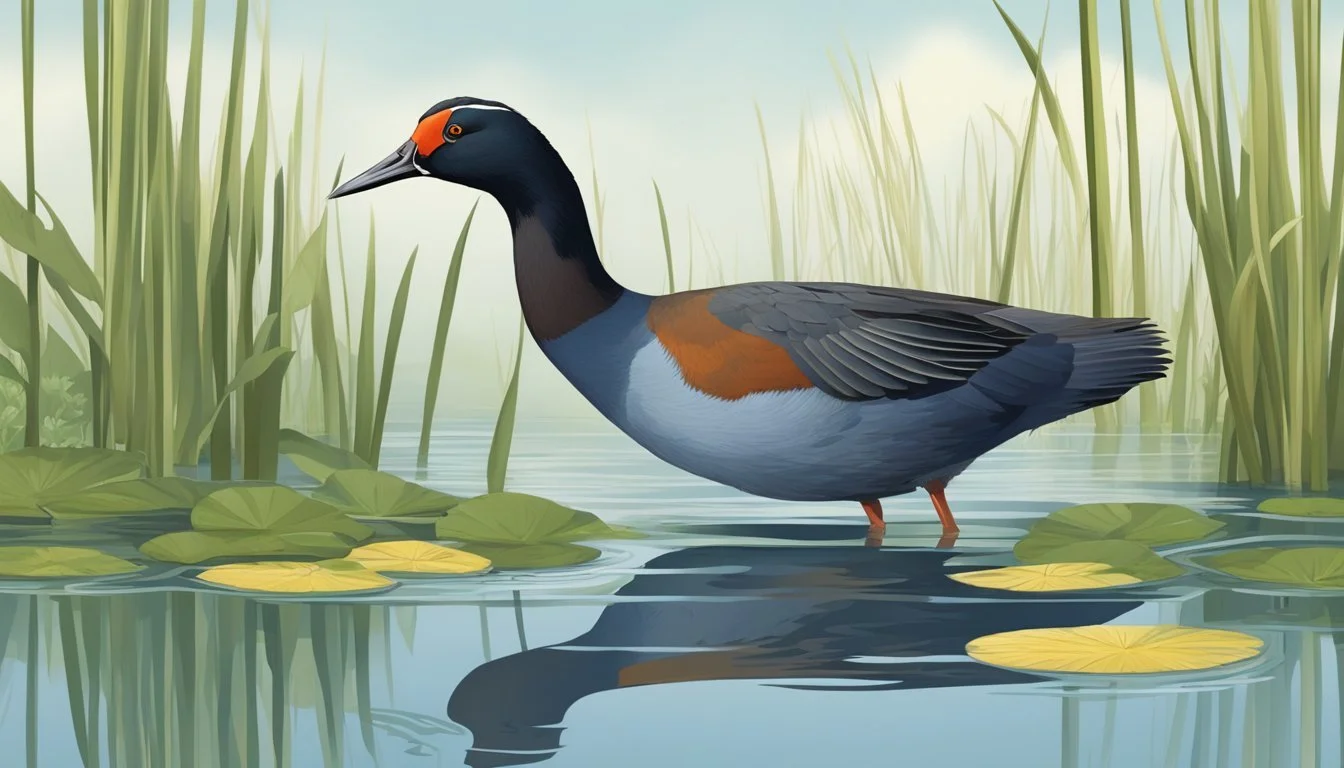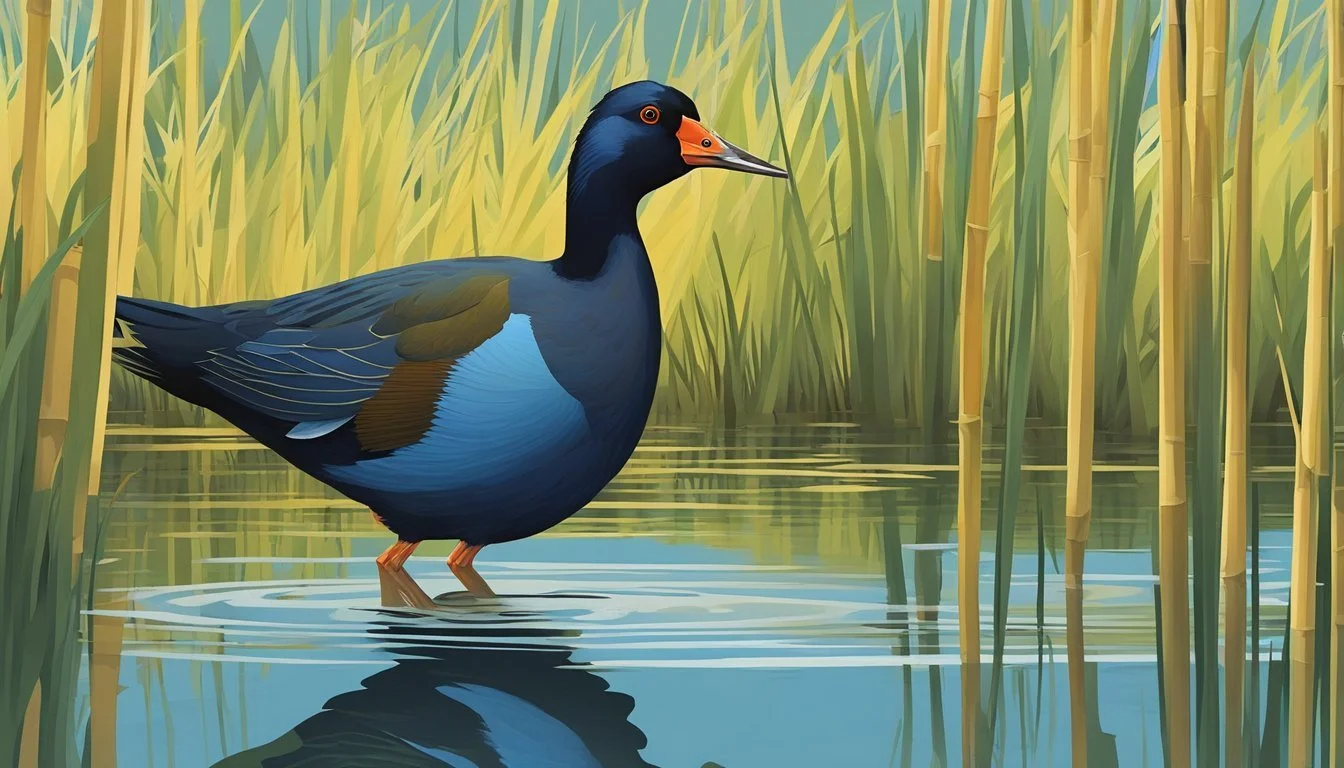Gallinule Hunting for Beginners
Essential Tips for Starting Out
Gallinule hunting offers outdoor enthusiasts an opportunity to engage with a unique type of waterfowl that inhabits wetlands across various regions. The common gallinule, which thrives in marshes and other moist habitats, presents a viable option for hunters looking to explore gamebird hunting beyond the more traditional ducks and geese. While not as commonly sought after, these coot-sized birds are abundant and can provide an enjoyable hunting experience due to their elusive nature and the challenging environments they frequent.
Hunters targeting the common gallinule should familiarize themselves with the bird's habitat preferences. Marshes, with their dense vegetation, are prime territories for gallinules, providing both cover and food sources for these birds. Successful gallinule hunting often involves navigating these wetland environments carefully by boat, using push poles and paddles to silently approach potential bird locations. Stealth is crucial, as gallinules are known to be wary and can be spooked easily.
Understanding the behaviors and patterns of common gallinules is key to a successful hunt. These birds prefer to walk along the shoreline or swim in open water, and hunters need to be adept at spotting them amongst the thick vegetation. In some regions, like Florida and Alabama, gallinule hunting is both a popular and regulated activity, requiring proper permits and adherence to specific hunting seasons and bag limits established by local wildlife agencies. Hunters must ensure they are in compliance with these regulations to enjoy a responsible and ethical hunting experience.
Understanding Gallinules
Gallinules, often referred to as marsh hens or moorhens, are medium-sized waterbirds that can be found in freshwater wetlands. The more common species, including the Common Gallinule and the Purple Gallinule, are part of the rail family, which also includes the similar-looking but distinct American Coot.
Behavior & Diet: Gallinule behavior is characterized by their ability to walk on floating vegetation thanks to their long toes. These birds are omnivorous, their diet consisting of:
Plants such as leaves and seeds
Various fruits and berries
Small aquatic life, including snails, tadpoles, and insects
At times, they may also consume carrion
Habitat & Nesting: They favor wetlands with abundant aquatic vegetation, which provide both food and shelter. These habitats include marshes, shorelines, and open water areas within freshwater environments. Their nests are typically built from the surrounding vegetation and can be located on the ground or above water.
Flight: While gallinules are capable flyers, they are more commonly observed swimming or walking on aquatic vegetation. Flight among these birds is usually short and low over water.
Identification: Gallinules can be distinguished by their:
Small heads
Thin necks
Sharp, slender bills
Characteristic cdlors:
The Common Gallinule flaunts dark plumage with a distinctive red frontal shield
The Purple Gallinule stands out with its vibrant purple-blue feathers and yellow legs
Understanding the characteristics and habitat preferences of gallinules is essential for anyone interested in the hunt or study of these birds. They are interesting creatures that play important roles in their ecosystems.
Habitat and Distribution
Common gallinules occupy a distinct niche in wetland ecosystems, where freshwater and brackish environments provide the ideal habitat. These birds are found across various water bodies, demonstrating the species' adaptability and extensive distribution.
Wetland Habitats
Common gallinules thrive in freshwater marshes, brackish marshes, and wetland habitats that offer a combination of submerged, floating, and emergent vegetation along with open water. They are also known to utilize smaller bodies of water such as ditches, canals, and rice fields, where these adaptable birds find food and shelter.
Range of Species
The distribution of common gallinules extends across North and South America. They are migratory birds, with some populations over-wintering in southern states such as Louisiana, Florida, and Texas. During migration, these birds cover expansive areas, demonstrating their adaptability to various wetlands.
Local Hunting Spots
In areas where hunting common gallinules is legal, wildlife management areas and public lands with suitable wetland habitats become prime hunting spots. Hunters should check local regulations and seasons, which can vary by state in places such as Alabama and Mississippi.
Conservation and Ethics
When hunting common gallinules, it is crucial to consider the bird's conservation status and the ethics of sustainable hunting practices. Common gallinules are a game species in certain areas; thus, monitoring hunting pressures, especially on wintering grounds, is essential for the bird's population health.
Equipment Essentials
Hunters targeting common gallinules should equip themselves with gear suited for wetland environments. This includes:
Waterproof boots: Essential for navigating marshy terrain.
Camouflage: Helps the hunter blend into the wetland habitat.
Decoys and calls: Can be used to attract gallinules within shooting range.
It is vital for hunters to familiarize themselves with the unique characteristics and behaviors of common gallinules to hunt responsibly and effectively.



